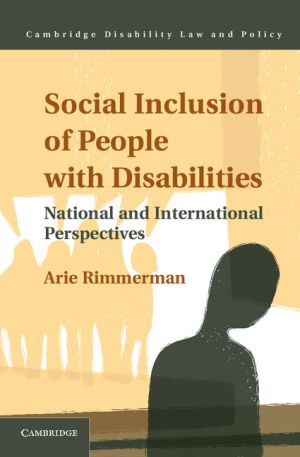
Social inclusion is often used interchangeably with the terms social cohesion, social integration, and social participation, positioning social exclusion as the opposite. The latter is a contested term that refers to a wide range of phenomena and processes related to poverty and deprivation, but it is also used in relation to marginalized people and places. This book consists of two parts: the first aims to review the domestic and international historical roots and the conceptual base of disability, as well as the expressions of social exclusion of people with disabilities that interfere in their efforts to exercise their rights in society. It offers a comprehensive review of social and legal approaches to social exclusion and inclusion. The second part introduces and analyzes domestic and international social and legal strategies to promote social inclusion for people with disabilities. The closing chapter highlights the role of morality, law, science, and media and technology in achieving inclusion.